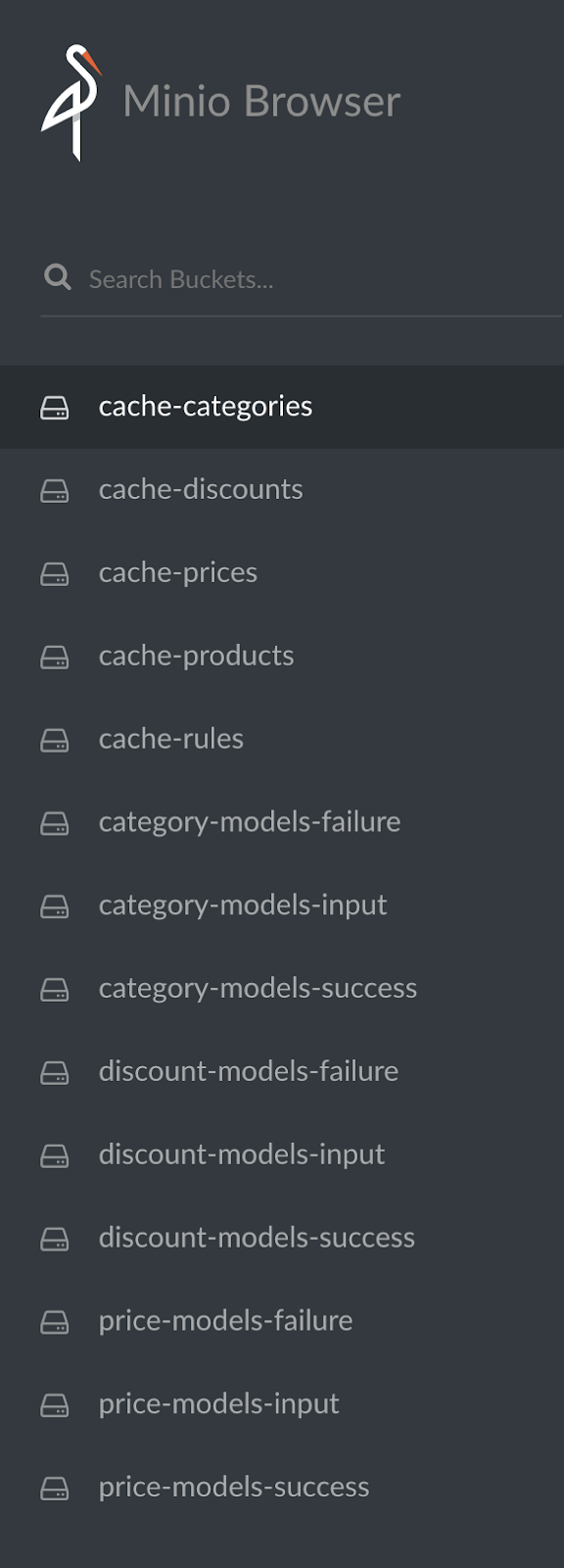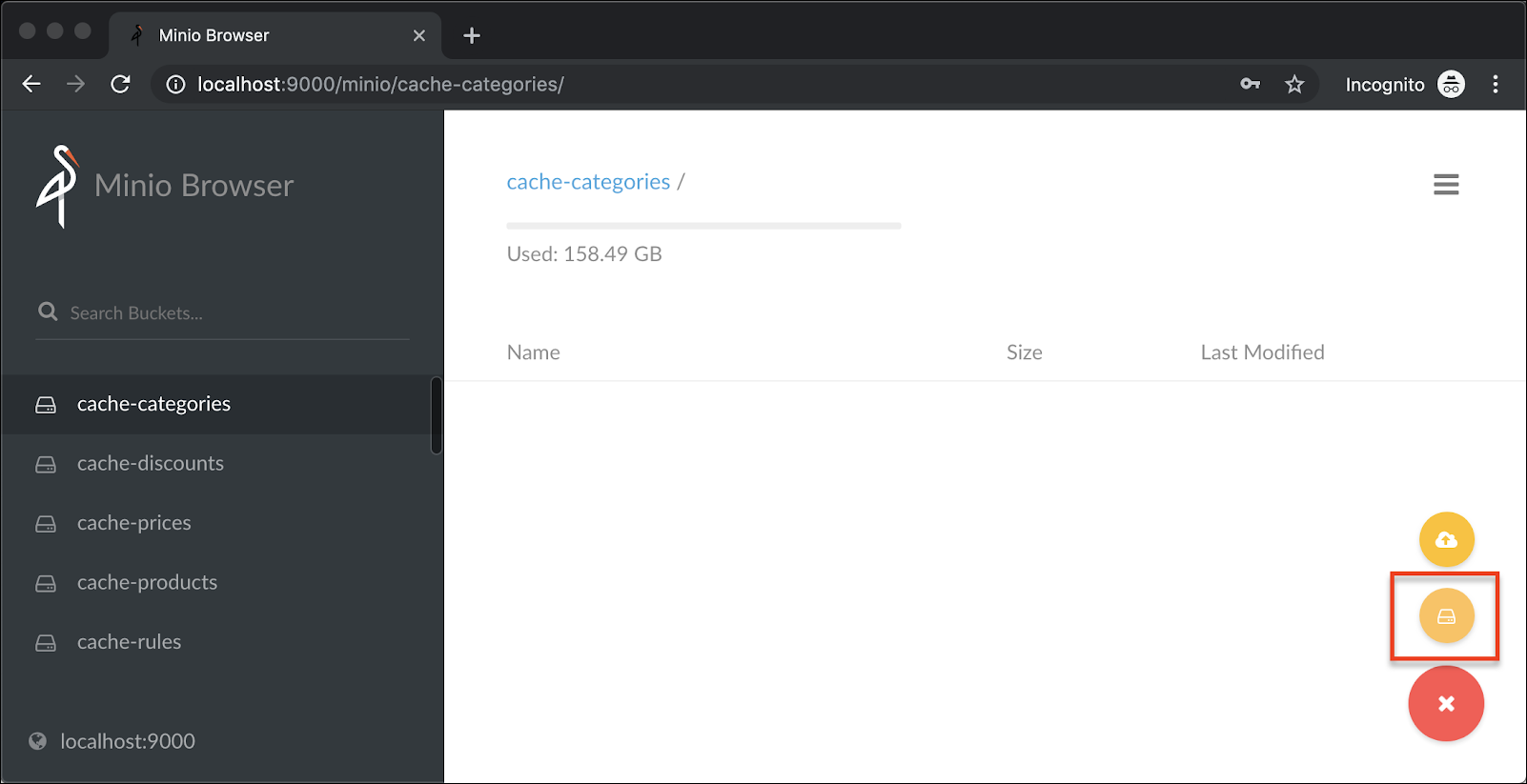OPE Storage
TIBCO OPE Storage (OPES) needs to store customer model XML and processed cached objects in permanent storage so as to persist data across OPE micro service container restarts.
For example, for the product model, the MinIO buckets will be:
- product-models-failure
- product-models-input
- product-models-success
For 5 model types with 3 different types of buckets, there will be 15 buckets for processing model XMLs.
Similarly to store processed cache information, separate cache buckets are created for each model type; therefore, the bucket names for the processed cache will be:
Here is an example screenshot of how the buckets look in the MinIO UI. The MinIO UI can be accessed on
http(s)://<host>:<port>:9000.


The following is an example UI screen with an option (highlighted in the RED box) to create a new bucket.

Copyright © Cloud Software Group, Inc. All rights reserved.
